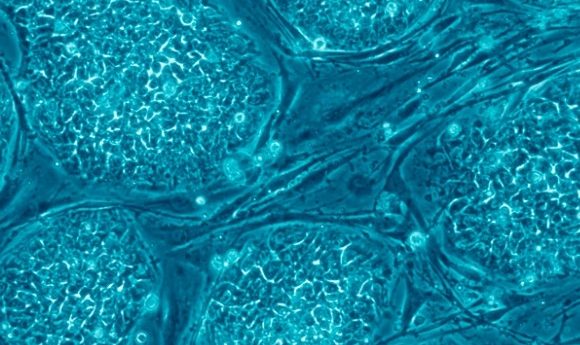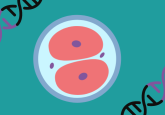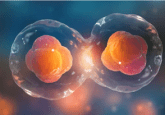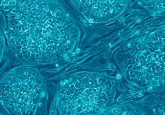Creation of the first human–monkey chimera

An ethical debate has been sparked after the announcement that a Spanish and US research team has created the first human–monkey chimera, in a lab in China. But could this novel approach change the way we think about transplantation?
Recently, there have been reports that a team lead by Juan Carlos Izpisua Belmonte, a professor in the Gene Expression Laboratories at the Salk Institute for Biological studies (CA, USA), has been successful in creating a monkey–human chimera that is said “…to shed important light on early development and could one day lead to new methods for growing transplantable human tissues,” according to Salk President Elizabeth Blackburn. Previously, his team grew “a rat pancreas, heart and eyes in a developing mouse… human cells and tissues in early-stage pig and cattle embryos,” Blackburn reported. “The results are very promising,” noted Núñez, the vice chancellor of research at The Catholic University of Saint Anthony (Guadalupe, Spain).
Izpisua Belmonte was featured in TIME MAGAZINE’s ’50 most influential people in health care 2018’ and in 2016 received the NIH (MA, USA) Pioneer Award for innovations in cell biology, which came with a minimum of 2.5 million dollars towards research costs. The NIH states this 5-year grant is given to “individual scientists of exceptional creativity who propose pioneering and highly innovative approaches with the potential to produce an unusually high impact on biomedical or behavioral research.”
How does chimerism work?
Chimerism is the amalgamation of two or more genetically distinct populations. It is a method that has been utilized by scientists for many years to study human diseases. There are many processes by which human–animal chimera’s can be created, for example, mixing embryonic cells (ECs) from two individuals, transplanting fetal tissues into another individual, or grafting ECs or their different products into another individual.
A common technique for creating human–animal chimeras starts in early embryonic development. Researchers can alter cell differentiation capabilities using techniques such as CRISPR/Cas9. The extrinsic niche factors necessary for tissue and organ formation are kept intact. Due to the lack of commitment from progenitor cells, the niche is considered as empty. The chimeric capability of donor stem cells can then be harnessed to “fill” these empty niches. Currently, this is routinely done on blastocysts; however, zygote genome editing potentially removes the need for pre‐existing gene knockout.
-
Interspecies organ donation
-
CRISPR/Cas9 gene editing in primates
-
Genome editing of human embryos may be morally acceptable
Why is this research so important?
“The ultimate goal would be to create a human organ that could be transplanted, but the path itself is almost more interesting for today’s scientists…I am essentially aware that I will not see it happen [the development of human organs in animals] but to arrive at that point, it’s necessary to pass through this one.” Nunez added. “What we want is to make progress for the sake of people who have a disease.”
“In theory, for diseases where primate models are not good enough, making human–monkey chimeras could provide a better model of brain diseases, for example in Alzheimer’s and Dementia, where progress into definitive treatments has been slow due to poor disease models,” Izpisua Belmonte stated.
Alejandro De Los Angeles (Yale University; CT, USA) remarked “Making human–monkey chimeras could teach us how to make human–pig chimeras with the hope of making organs for transplantation… it could teach us which types of stem cells we should be using, or other ways of enhancing what’s called ‘human chimerism levels’ inside pigs.”
What about the ethical implications?
In most countries, gene editing directly on primate embryos is only considered under strict guidelines. However, in 2015, China became the first country to publish data on CRISPR/Cas9 gene editing in human zygotes and recently Japan has lifted the ban on such embryos to develop beyond 14 days. “We are doing the experiments with monkeys in China because, in principle, they cannot be done here [in Spain] because of lack of infrastructure,” Núñez added.
Robin Lovell-Badge (Francis Crick Institute; London, UK), commented on this issue. He stated “I don’t think it is particularly concerning in terms of the ethics, because you are not taking them far enough to have a nervous system or develop in any way – it’s just really a ball of cells [but] how do you restrict the contribution of the human cells just to the organ that you want to make?… if you allow these animals to go all the way through and be born, if you have a big contribution to the central nervous system from the human cells, then that obviously becomes a concern.” However, Nunez declared that Izpisua Belmonte’s research team has mechanisms “so that if human cells migrate to the brain, they will self-destruct [and] in no case is the gestation brought to full term.”
With China already reporting a study in which human genes have been placed into monkey’s brains many people have questioned the integrity of the authors. ‘If they must go around their own country’s laws to complete this study, should they be conducting it in the first place?’
Currently, the jury is out. The research team is hoping to have the results of this study published in an internationally renowned journal by the end of the year. Do you think there is anything ethically wrong with creating human-monkey chimeras? Let us know on twitter @MyBioTechniques.





